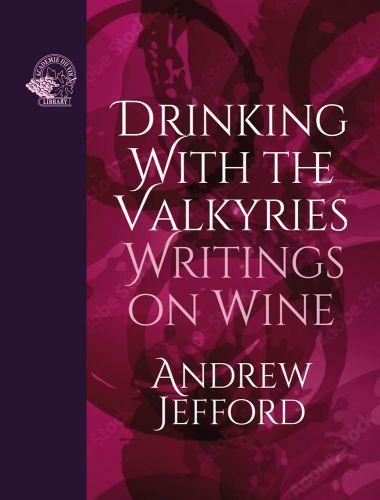
or freezing at vast distances one from another. To have taken part in the adventure of earthly life is astonishing, a chance of inconceivable rarity. How do we communicate that astonishment, and use it to foster the reverence and respect which might sustain biodiversity for the future? We can’t all be wildlife camera operators, climate scientists or astrophysicists. Wine, I quickly felt as I first began to explore it, was a unique way to apprehend the world’s variousness. Every bottle of wine was a bottle of somewhere or other; the difference between wines was, at least in part, the difference between those places. Drinking wine was a kind of surrogate journeying: Italy’s Valtellina Inferno one night, South Africa’s Darling Hills the next. On your kitchen table.
Moreover, this was a difference that you didn’t just read about in a magazine or watch on television. You smelled and tasted wine; you then took it into your body. Wine was a most intimate way to know the world. This sensual engagement with place and with difference was a supplementary astonishment, a doubling of wonder, and it was one to which wine’s perfectly calibrated alcohol content lent emotional force. The engagement with place through wine was, thus, not only educational and inspiring, but consoling, too. If, of course, used wisely.
This, perhaps, was a message worth spreading, which was all (I shall tell the Reaper) I felt able to do. But would it not be better to make wine, and thereby bring a place into sensual being for those who may find themselves thousands of miles away? That, I think, must be uniquely exciting: a bond with place which it is possible to have in no other way, as well as the best route to understanding wine itself. But there is much chance in life. I didn’t have the chance to make it but to write about it; you might have the chance to sell it, to see it safely across the oceans, or simply to drink it and appreciate it after your own day’s work is done. What matters, in the end, is that we value wine as one of the most beautiful of human artifacts, and one whose being reflects, with shocking fidelity, the unconformities and irregularities of our earthly home.
Andrew Jefford March 2022
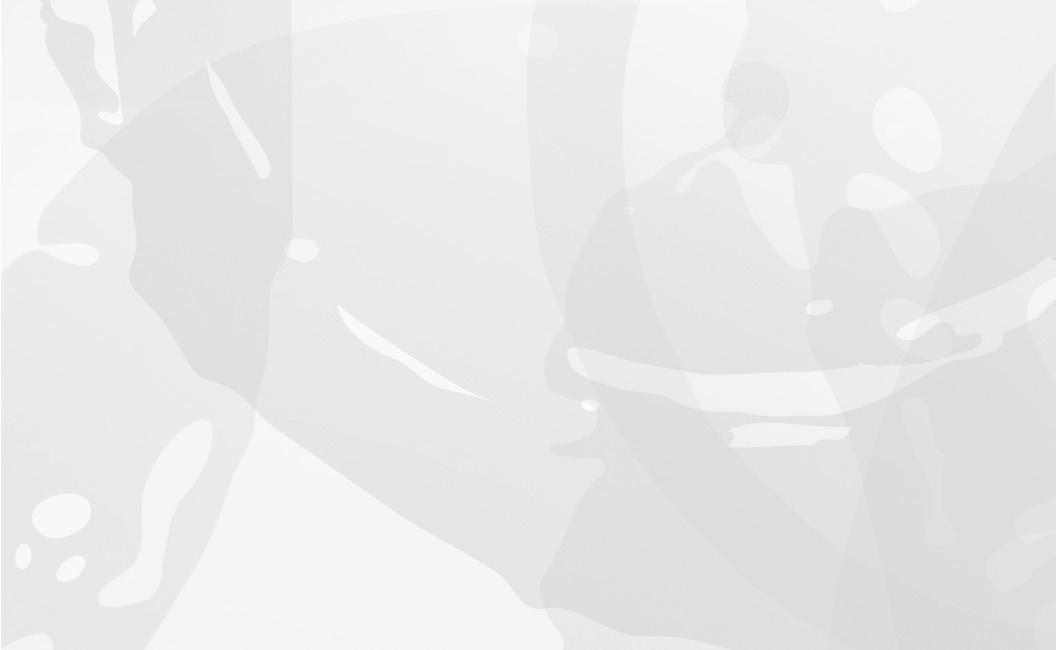
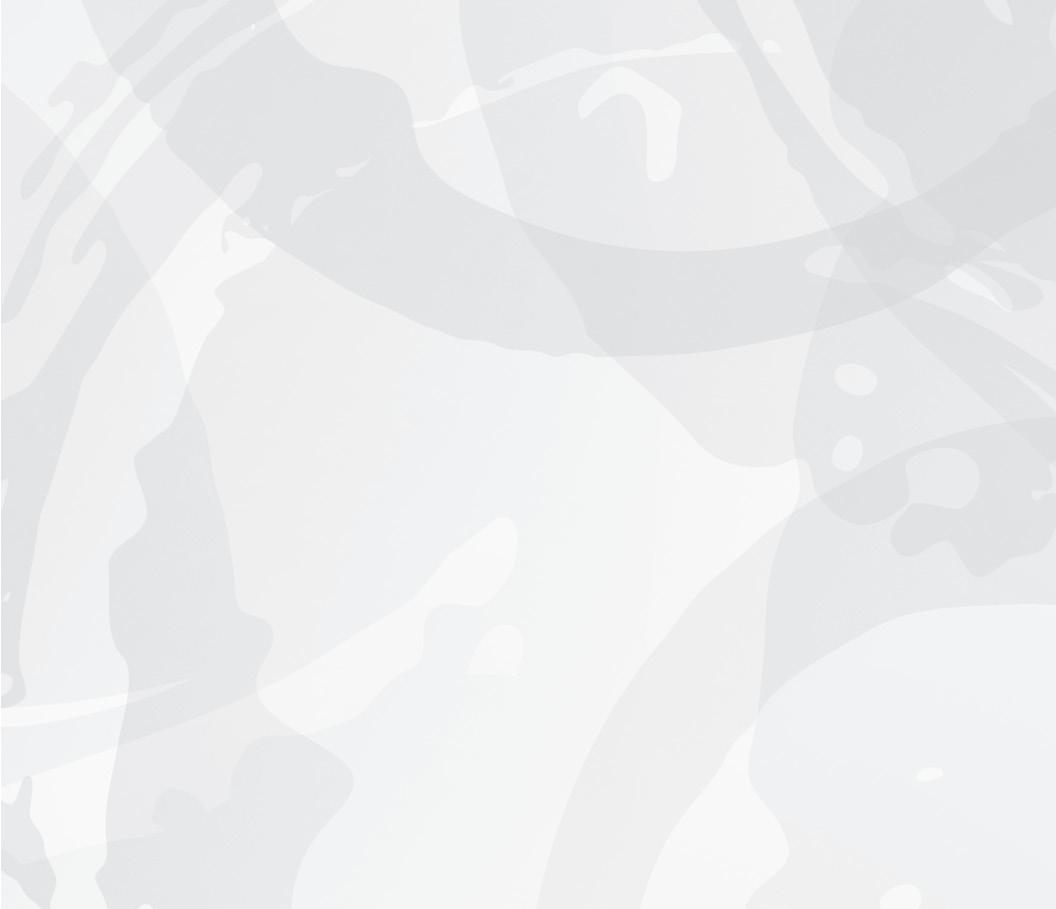
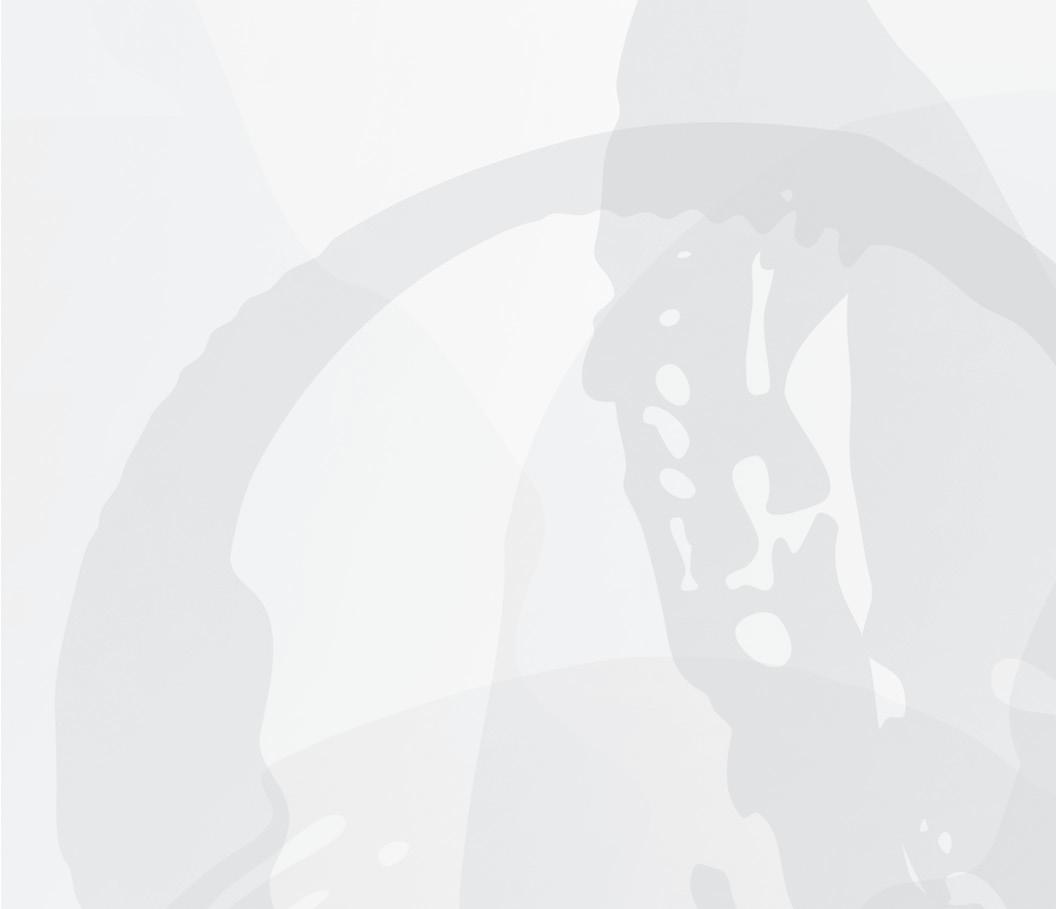
16
CHAPTER ONE O rigins




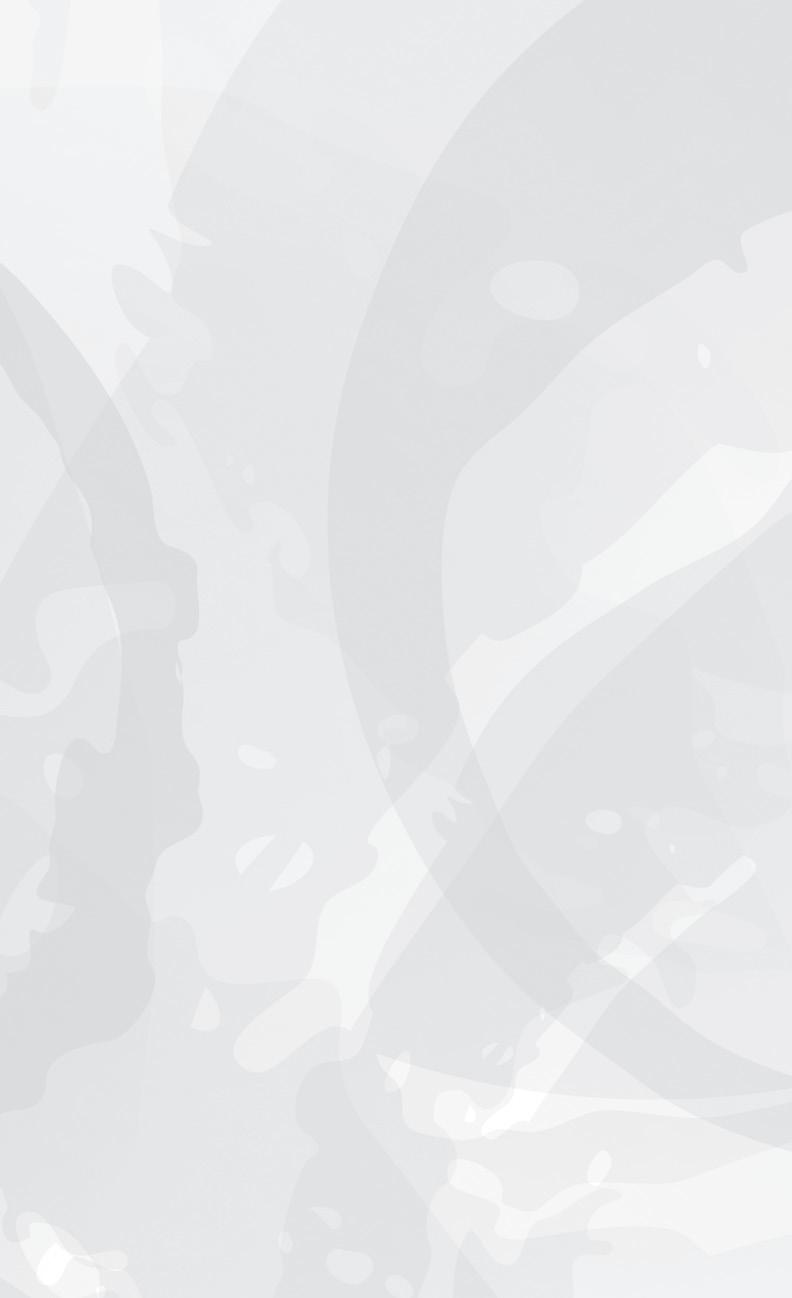

17
Homo Imbibens: The Work of Patrick McGovern
A glass of wine poured at the end of the day, quietly surrendering its scents and stories: we know no moment quite like this. Daylight is going or gone, and with it the obligation to work, to act and to analyse; that glass guides us towards ease, imagination and emotion, all of them proper to darkness, and a fitting prelude to sleep. The wine nuances our lived experience, bringing both perspective and chiaroscuro. At times, indeed, it can seem to furnish a kind of spiritual nourishment. Our involvement with it triggers a cascade of sensual delight, and sometimes more than that, too. Chosen with care, stored for some years, a bottle may come both laden with memories and pregnant with expectation; those expectations will then be dashed, matched or exceeded by its performance in nose and mouth. This sensual delight, in other words, is richly invested. No moment like it, but no substance like it, either. Our enjoyment of that glass of wine, though, is also the individual successor to countless acts of drinking. We no longer fashion arrowheads, using them to kill our dinner; we no longer dry the skin and fur our dinner was ripped from, and use it to stitch clothes and craft shoes. Our ancestors, by contrast, never spent the day online, sat in traffic jams, or felt existentially superfluous. The consumption of an alcoholic beverage by candlelight or firelight is one of the few intimate daily acts we share with those who have gone before us; it may be the most culturally rich of these. But how far before? Shakespeare’s Falstaff, alone in the forest, hymning sack; the Chinese T’ang poet Li Bai, watching snowflakes melt into his wine; Homer’s Odysseus and his sailors, fortifying themselves with the ‘plentiful supply of meat, and sparkling ruddy wine’ provided by Circe before braving Scylla and Charybdis: literature provides us with a few delicious fragments... but then we lose the trace.
18 ORIGINS
Traces have furnished a life’s work for Patrick McGovern, scientific director of the Biomolecular Archaeology Laboratory for Cuisine, Fermented Beverages, and Health at the University of Pennsylvania Museum; his project is to piece together the ‘before’. ‘What do you do?’ I asked him (in October 2017). ‘I am a combination chemist and archaeologist,’ he replied. ‘The general idea is to recover the ancient organics that were contained within certain vessels, and find out what they were.’ But as his books (notably Uncorking The Past: The quest for wine, beer, and other alcoholic beverages (2009) hereafter UP, and Ancient Wine: The Search for the Origins of Viniculture (2019)) make clear, in synthesizing both his own work and that of others, he suggests something more startling: that man is Homo imbibens, driven by biological, social and religious imperatives to consume alcohol, and that this relationship with alcohol is a key to ‘understanding the development of our species and its cultures’.
From murex to mead
A talented pianist who considered a career in music, McGovern opted to study undergraduate chemistry at Cornell, taking a minor in English literature, and soon after became fascinated by ancient history: you can see the rangy mind. He switched to Near Eastern archaeology and history for his doctoral research, and began work studying pottery and glass fragments before specializing in the ‘royal purple’ of the Canaanites and the Phoenicians (extracted from the Mediterranean murex mollusc, and once the most expensive dye in the world). This in turn led him to specialize more generally in ancient organic materials, and in particular the residues left inside the pottery fragments of jars and other vessel forms.
It seems hard to believe today, but standard archaeological practice in the past was to clean away these residues with acid to remove carbonates, the better to see and understand the pottery itself. ‘We were always curious as to what was inside these vessels,’ he points out. ‘If you could identify the organic components, you could actually say something about the contents. Then you could say more about what it meant to humans – who are organic creatures.’ The great breakthrough came with liquid and gas chromatography,
19
McGovern’s account of the many plants used for the preparation of alcoholic beverages in Uncorking the Past is comprehensive. He is in particular awe of the Mesoamerican domestication of maize from teosinte, thereby turning ‘a minuscule mountain grass into the world’s most prolific source of alcohol’ (UP, p226). Other major sources of alcohol for different societies in the past have included cacao/chocolate, Schinus molle (the Peruvian pepper tree), manioc, cassava, sorghum, millet, date palm and countless other local fruits and berries.
Might, though, the Homo imbibens hypothesis be pushing evidence too far? Is McGovern according too prominent a role to alcohol consumption, which is never nutritionally necessary, and to the creation of alcoholic beverages in ancient societies? ‘Amazingly, that pushback hasn’t come up too much. Of course it’s true that other technologies have had a great influence, but I think in general that the importance of alcoholic beverages has been if anything rather overlooked. Ten percent of the enzymes in the human liver are devoted to processing alcohol, after all. We have enzymes in our mouths to convert starch to sugar. As I said earlier, we’re set up to consume an alcoholic beverage. It’s an important part of human biology, social relations, religions, economy. It has very far-flung dimensions to it which aren’t as widely appreciated as they could be.’
Are the efforts that are poured into encouraging and enforcing absention, whether by doctors or clerics, doomed in the long run? ‘I think so. Ultimately, humans will always come back to it. They have an urge to drink alcohol. Though I would also say that moderate consumption is what we are adapted to, and that also probably goes back to the Palaeolithic period. Alcohol is so readily available now that people overdo it. But that doesn’t mean you have to ignore its positive effects. Before you had synthetic medicine, what was the medicine that was used to prevent disease? In China, India, Greece, Rome, Egypt ... it was an alcoholic medium which dissolves herbs, but the alcohol itself has a multiple number of health benefits. We know it is anti-cholesterol, anti-cancer, an analgesic that numbs pain; it would have been the original universal medicine. That’s the way I see it.’
ORIGINS



30
CHAPTER TWO


S ome S oils, S ome S kies




31
The Blue Corruptor
We’ve probably all imagined the scene. That unexpected letter, one Thursday, from a provincial solicitor. The curious, dry phrasing, outlining the ‘bequest’ from the ‘deceased’, whose name means nothing to you. You read the letter several times. The sum looks improbably large: it must be a hoax. Nonetheless you phone; the details are politely and impassively confirmed, and arrangements put in hand for a bank transfer. It takes a week to sink in, and another week to hand in your notice. And then you begin to look for a vineyard.
It hasn’t happened to me yet, and I don’t suppose it ever will. But this may be your future. Where would you choose to buy?
Bandol, I have often thought, has a lot going for it. Wherever you are in this Provençal appellation, you’re never more than 15 kilometres from the Mediterranean; you can see the glitter of the waves in many vineyards as you prune. You’re within an easy drive of the sunniest city in France, Marseille; nearer still to a tidier naval town with fewer gangland killings, Toulon. Tourists flock to the pretty little seaside port that gives this appellation its name, and there’s an oenothèque there near the seafront to help sell your wine. Every serious restaurant wine list between Arles and Menton, of course, needs to feature a range of Bandol, while no French three-star restaurant can ignore you, either. The walled terraces of this stony amphitheatre may constitute the greatest site in the world for the Mourvèdre grape variety. Why bother being an also-ran in Bordeaux, a nobody in Languedoc or a beggarly outsider in the Hautes Côtes de Beaune? Buy in Bandol.
‘The problem of Bandol,’ Freddy Estienne of Domaine de la Laidière told me, ‘is that it’s too near to the sea.’ What? I thought that was its gift. It was only when I spent a couple of days tasting and touring in the AOC that I came to realize that sometimes, in the wine world as in life more generally, what seems at first like a blessing can in fact be a curse.
SOME SOILS, SOME SKIES
32
The Mourvèdre grape variety makes difficult, rewarding red wines. It’s not the only one grown in this 1,500-hectare appellation: the rules stipulate that the wines must be between 50 percent and 95 percent Mourvèdre, with the balance coming from Grenache, Cinsault, Carignan and Syrah. ‘Pure Mourvèdre is beautiful,’ says Reynald Delille of Domaine de Terrebrune, ‘but it’s always better with a little bit of something else’ – and most growers seem to agree. Perhaps they’re right, but the greatest Bandols nonetheless strike me as being the richest in Mourvèdre, and Mourvèdre here acquires a completeness, a harmony and an equilibrium that seems to elude it elsewhere. These dense, allusive, textured reds turn magnificently savoury as the years pass. Bandol is one of the great red wines of France.
It’s disconcerting, therefore, to discover that only just over 30 percent of the wine produced in this relatively small AOC is in fact red. There’s a little white, but most Bandol is rosé – because that’s what the holidaymakers want. And then… there are all those little houses, where elderly Parisians potter through retirement with a poodle or two. When I mentioned this, a communal wail went up. ‘It’s the biggest worry we have,’ said Patricia Ferrero, who directs the local growers’ grouping. ‘We are eight little communes, and whenever anyone wants to build anything, it is always in the vines.’ The appellation is an amphitheatre, and villages like Le Castellet and La Cadière d’Azur have an almost Tuscan beauty; the whole place could easily become a gigantic rest home. I began to look at the beautiful Mediterranean rather differently – as the blue corruptor, determined to usurp the land for its own ends.
Things haven’t quite gone critical yet; perhaps the quality of the best Bandol will one day be more widely recognized than at present. Nonetheless the fact remains that what may well be the greatest site in the world for an important red grape variety, one capable of producing great, cellar-seeking red wines, turns most of it into rosé. The customer isn’t always right.
33
to say it loudly. Perhaps we can say that wines which have lost their stems and their skins very early are motherless.’


Of course you don’t have to be a believer to enjoy the strange beauty of Georgian wines; hedonic magnetism is enough. This spiritual tradition, though, gives Georgian winemakers a unique sense of purpose. ‘Hence we love earth,’ continues Bishop Davit in that 2011 sermon. ‘[It is] our homeland not only because our ancestors’ bones, sinews and gristle, turned into dust, lie in it … [but because it is also] a thread of memory tied in the sky. It is a bitter nerve of our fall. It is a key to the covenant given to us –humble labour. It is the root of the vine – the Lord’s blood.’ You don’t hear this sort of thing much in Bordeaux, Adelaide or Napa. Alone at dusk in a Georgian vineyard, though, the long echo may console.

64
SOME SOILS, SOME SKIES
CHAPTER THREE





T aste and T asting

65
Bags, Butter and Biscuits
‘Bags of fruit.’ I remember having trouble with that one. Which fruit, first of all, were the famous bags filled with? Fresh raspberries? Mouth-puckering blackcurrants? Squishy peaches? Hard green apples? Dried figs? All different, every one. And none of them tasted much like a glass of wine.
‘Buttery’ was another problem. How could wine be like butter? Butter is fat; wine is carbohydrate. Butter melts and drips and dribbles and turns toasted crumpets from chunks of sofa upholstery into something delicious. Whereas all wine is acidic, with a pH of less than 4. They’re almost opposites.
Champagne is still more piercing than most wines, yet I remember reading that it was ‘biscuity’. What can a glass of austere fizz have in common with a McVitie’s Digestive? And ‘nutty’, if anything, was worse. Nuts were dry and crunchy, and got richer as you went on chewing with what proved to be highly distinctive, fatty tastes… and you’re telling me that’s what a glass of Amontillado sherry does?
Nuts to that. You’re all nutty, you wine nuts. Wait a minute… Why should we say ‘nuts’ to something we are about to reject or show contempt for? What, exactly, do nuts have to do with a temporary loss of rationality? And why is an enthusiast a nut? The answer in each case is that it’s slangily conventional to say so. Senseless but memorable and economical – hence the convention. Which has little to do with nuts themselves.
Isn’t wine-tasting language the same? It begins with some sort of metaphorical insight – the glimpse of something in a wine’s scent or flavour that reminds the taster of blackcurrant or butter – but then quickly moves to a conventional level. Any easy, friendly young red wine necessarily becomes ‘fruity’; any oaked Chardonnay ends up ‘buttery’. TASTE
66
AND TASTING
This is the language of wine used at its most mechanical. You could call it jargon; it’s also hype. Every wine, even the most mediocre, will be described at some point in routinely flattering terms – on its back label, in a wine list, by a pliant critic or journalist. The standard descriptors are wheeled out, most of which are usually based on some sort of metaphor or allusion. Whereas truthful descriptions for most wines would involve terms like thin, hollow, simple, crass, awkward or confected.
Language is how we make sense of the world and everything in it. Each subject, therefore, needs the nourishing humus of its own language – otherwise we can’t learn or understand anything about that subject. Expanding the limits of your language will expand the horizons of your world, as Wittgenstein famously observed. Wine is no different in this respect from physics or philosophy. Those who say that all discussion of wine should be in ‘plain English’ are plain wrong. The results would be plain boring. We must do better than that.
Wine’s problem is that humans have always been lazy about finding unique, specific words for what we smell and taste. If dogs could talk, no doubt they would have thousands of doggy words for smells of different sorts, just as we have a multitude of verbal options to describe what we see, via colours and shapes and sizes. As it is, nose-feeble humans relate particular smells and flavours to things that they remind us of. Wine made from the Cabernet Sauvignon grape variety to blackcurrants, for example; Sauvignon Blanc wines to grass or asparagus. Oaked Chardonnay to butter. There’s nothing wrong with this, provided it is sensitive, nuanced, accurate and innovative where necessary, and provided that these analogies are not allowed to take over the entire description, or dominate the wine lexicon. Too often, though, this is exactly what happens. Poor little wines get so laden down with descriptors that they can barely move, and totter off into the world like donkeys with wardrobes strapped onto their backs.
The use of specific flavour analogies is not the only way to talk about wines, and often these analogies are not even interesting or communicative. I did eventually learn to recognize fruitiness or butteriness or nuttiness in a wine, but for a year or two, those terms left me foxed. If I’m told a white wine has ‘a compelling nose of enoki, toasted buckwheat, tangerine, guava
67



96 TASTE AND TASTING
CHAPTER FOUR





S ome b eautiful w ines

97
Jewelled Absence:
2016 Petit Chablis, Les Crioux, William Fèvre
Here’s a shock, in a glass. A step out on deck in a winter gale; a leap into chill water.
Once acclimatized, of course, the affront is tonic; you’re glad you risked all. Provocation becomes stimulation; stimulation nourishes, even as it braces. Safety is, for all its virtue, airless; its redoubts must be quit, only to be regained, and then abandoned again before the hasty scuttle back. Thus we shuttle our way forward, like dancing crabs.
Every day’s first sip of wine (after the flaccid afternoon, the stale journey home) is a little like this. All wine, after all, is acid. Even the low-acid ones, the Condrieu or Gewürztraminer with an insouciant pH of 4, are three grand notches short of chemical neutrality. The further you descend towards a pH of 3, the sharper the shock, the cooler the pool, the more polar the gale.
This wine’s colour is a kind of mercury, pointing to what lies ahead. An absence of gold, drained away to nothing, leaving just a glint of silver, a suspicion of green. Nose into the glass, toe in the chill water. Fresh. What does ‘fresh’ smell of? Lemon juice, separated from the oils of its skin: raw, bare. Or ice. Not cubes, but the frozen fringe of a trickling winter stream: no reeds, no plant matter, no muddy carp. Just water rushing over stones, arrested in part by water turned stone itself.
Why is it that a shy scent of this sort can engage the attention so, or set the mouth watering even before the first sip? There’s no yeast here; it’s flayed plant, stripped juice. It’s the presence that is almost an absence: the clearing in the boreal forest, filled with cold light, with crusted snow. All the same, our noses must gauge something here that is not found elsewhere. There are other Chardonnays from cool places that do not smell like this, even if their point of difference is simply a more assertive aromatic presence. Here we feast on an ice-jewelled absence.
98
SOME BEAUTIFUL WINES
You taste the juicy driving sourness. The tongue plunges in, then splashes and shakes the mouth into life like a wet dog bounding into a warm kitchen. This is the taste of shivering. That, in a way, is all there is: it’s Petit Chablis. We might, as we smelled its aromatic absence, have imagined water running over stones, and water turned stone, but there is no particular stoniness in the wine to dignify its austere, close-shaven, convict-like almostfruit; no texture, no layers. There is just the confrontation, the shock. Lemon juice again, without spurting fragrant lemon oil, without cream, without layers; bitter lemon, unapologetic with it. Terrific. It took all summer to limp its way, like Magwitch in irons, to a 12% ripeness. Just the job. Your mouth is alive again, and the redoubt is empty. You’re out; you’re on.
Crioux is a kind of brand (though there is a lieu-dit of this name, which has nothing to do with this wine); Fèvre’s Didier Seguier blends it from assorted parcels of purchased fruit. I bought this bottle in a supermarket for 12 euros or so. I waited a couple of years before opening it. I don’t know why. I can’t say it’s improved, though there’s no evidence of decline, either. Perhaps the general profile of 2016, a relatively fresh one, encouraged me. The back label alludes to the familiar tropes of Portlandian and Kimmeridgean: lost semi-eternities of slow-dropping tropical bliss in the late Jurassic. It would be more useful to say that this is a wine of the highest, coldest hill sites and their hard, rattling cap rock, not of the warmer spots with their richer, yellowy, fossil-thickened marls. There is wine in here from above the forest above Les Clos. Though also, to be accurate, from cold clays in Lignorelles. And from sandy or silty patches when they wash up at the edges of the region, before the vines dissolve into fields of swaying green wheat. It’s the wine of marginal land, of disappointed hopes. But good Petit Chablis dashes hopes no longer. Our planet’s intelligent life, as we now recognize with dismay, has inadvertently duplicated the effect of the volcanic provinces of even deeper time than the Jurassic, layering carbon dioxide into the atmosphere as effectively as the belching Siberian traps of the Permian-Triassic boundary. It’s easy, if you drink wine, to taste global warming. Wines are getting richer, Chablis included. There’s even a new roundness in the cheeks of their starveling cousins. The unbalanced have found equilibrium, while the perfectly balanced begin to totter. And what,
99



120 SOME BEAUTIFUL WINES
CHAPTER
FIVE






a t ea b reak
121
The Cup that Consoles
Water is humankind’s favourite drink, and the universal drink of the animal world. This is hardly a surprise, living as we do on the blue planet, tracing our ancestry to sea life, and being composed chiefly of water ourselves. Tea comes next. There are no geographical and few cultural bars to its consumption; Muslims, Christians, Buddhists, agnostics and atheists happily sip tea together (only Mormons and some Jehovah’s Witnesses spurn the offer). Tea is much more widely drunk than wine, not least because of Islam’s proscription of alcohol. The Turks are the world’s largest per capita tea drinkers (3.16 kilograms per person per year in 2016); in Britain, around 40 percent of the human daily fluid intake is tea.
Both tea and wine are drug-laced water: tea contains the world’s most popular drug, caffeine, while wine contains the third-most popular, alcohol. (Nicotine, for the time being, divides the two.) Caffeine is far more toxic than alcohol: 5 grams would kill you, whereas anyone who drinks half a bottle of 12% abv wine for dinner will have consumed 36 g of alcohol without notable ill effect. The average cup of tea contains just 30 milligrams of caffeine, though, and the average cup of coffee 75 mg. Weight for weight, tea leaves contain more caffeine than coffee beans, but a much lighter load is used in the drink’s preparation. The effects of small doses of caffeine (an increase in metabolic rate and neural activity) are less evident to both users and observers than the celebrated effects of alcohol. They’re quietly significant nonetheless.
Both tea and wine, thus, are old friends to humanity. They punctuate our days and nights; they bring us refreshment and solace. Life would be less agreeable without their familiar pleasures. If I had to choose between the two, I’d choose tea – yet tea is little known to most wine drinkers. Let me make its case.
122
A TEA BREAK
1 Histories
The pair are Asian. Wine’s origins seem to lie in Transcaucasia [see Chapter One], where wild Vitis vinifera vines grow abundantly. Tea is native to the zone that includes the far south of China (Yunnan Province), Laos and Myanmar. Wild Camellia sinensis plants continue to thrive in the remote terrain here. It’s easy enough to create a rough tea garden in parts of southern China by simply clearing away other plants and leaving tea bushes to flourish. Vitis vinifera needs extensive selection and breeding (as well as grafting onto American vine rootstocks) to be usefully fruitful; not so Camellia sinensis, which was planted from seed until the 1970s. Even today, the finest pu-erh teas in Yunnan Province are made from wild tea trees, many of them hundreds of years old. In 1961, a tea tree perhaps more than 1,700 years old, and over 30 metres high with a trunk girth of a metre, was found in Yunnan. Plants this important to humanity, of course, need the sustenance of myth. No sooner had Noah stepped from his ark ‘upon the mountains of Ararat’ than he ‘began to be an husbandman, and he planted a vineyard’. The exact means by which lofty, rampant wild vines were disciplined into the fruitfulness so swiftly enjoyed by Noah (‘And he drank of the wine, and was drunken’) will never be known, but since the jar samples containing wine residues found at Shulaveris Gora and Gadachrili Gora in Georgia’s Lower Kartli date back 8,000 to 7,800 years, it would seem that wine is tea’s older sibling. The mythical origins of tea stretch back a mere 4,400 years to the legendary Emperor Shennong (‘the Divine Farmer’) who sagely noted that boiled water was safer than lake or river water to drink. One day his servants allowed a few leaves to fall from a tea bush into the Imperial Kettle. The Emperor hazarded a sip or two of the infusion: delicious. A myth of greater enchantment has Bodhidharma, the Buddhist monk who brought Chan (Zen) Buddhism to China in the sixth century, cut off his own eyelids to avoid falling asleep during meditation. The eyelids rooted; tea bushes grew from the sleepy flesh.
The first tentative written reference to tea occurs in the earliest collection of Chinese poetry, the Shi Jing or Book of Odes, whose poems were written between 3,100 and 2,700 years ago; tentative, because the
123
Other books from Académie du Vin Library we think you’ll enjoy:
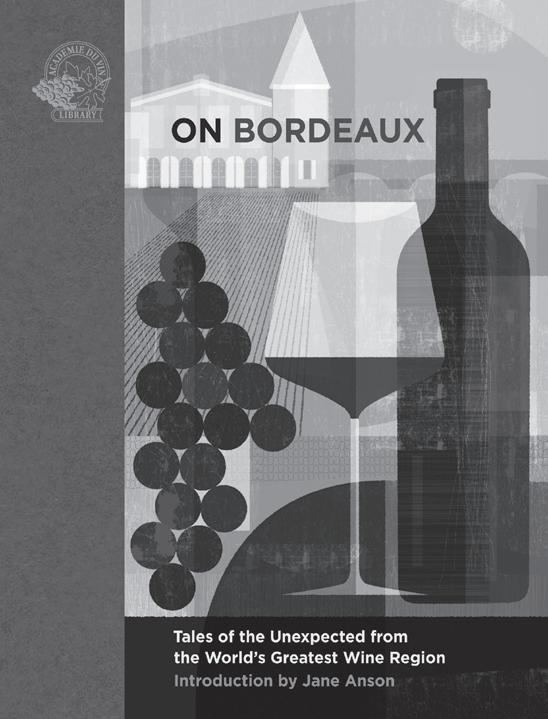
THE LIFE AND WINES OF HUGH JOHNSON
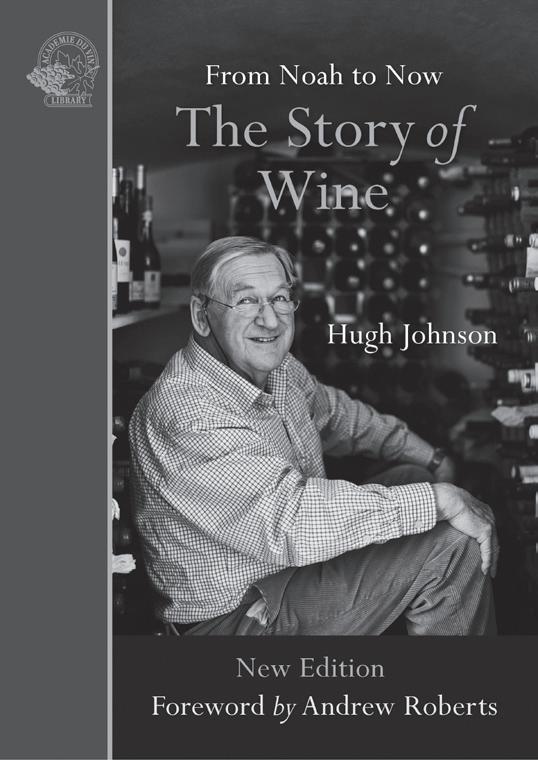

The world’s best-loved wine author weaves the story of his own epic wine journey.
OZ CLARKE ON WINE
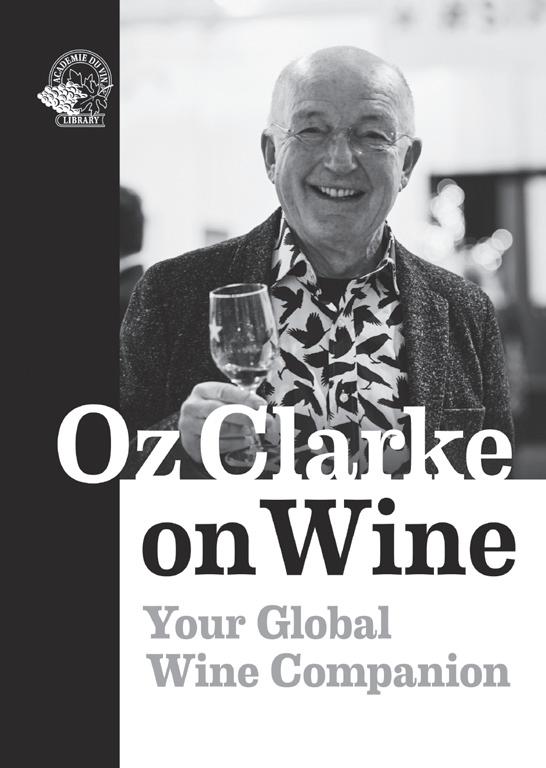
Your Global Wine Companion
A fast-paced tour of the world’s most delicious wine styles with Oz.
ON BORDEAUX
Tales of the Unexpected from the World’s Greatest Wine Region
Susan Keevil
Why these wines are the most talked-about.
THE STORY OF WINE
From Noah to Now
Hugh Johnson
The new edition of Hugh Johnson’s captivating journey through wine history.
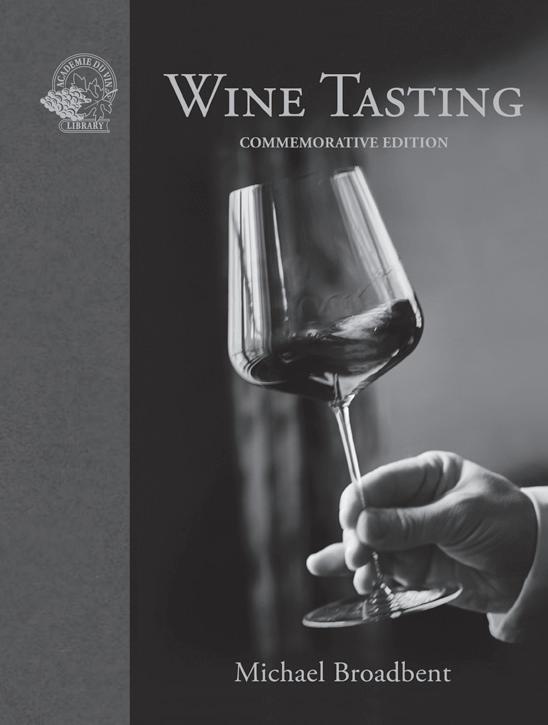
ON CALIFORNIA
From Napa to Nebbiolo…
Wine Tales from the Golden State
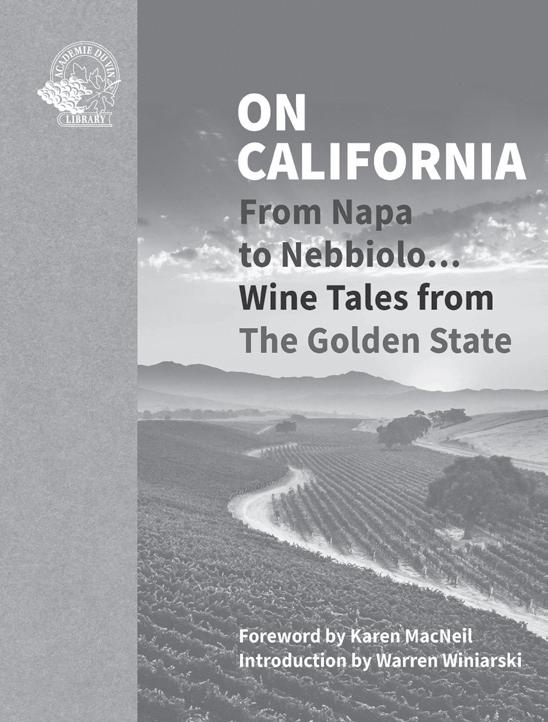
Susan Keevil
California’s great wine adventure as told by our A-list team of experts and enthusiasts.
WINE TASTING
Commemorative Edition
Michael Broadbent
The definitive guide that began it all.
www.academieduvinlibrary.com






272

























